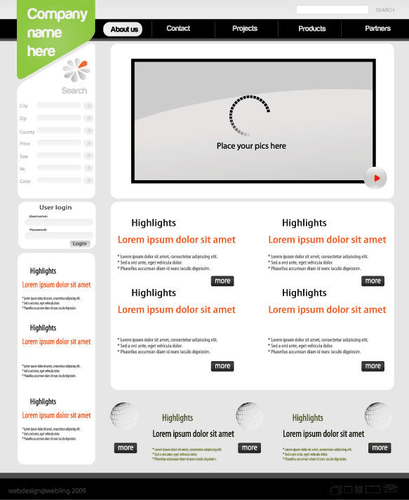
Think of accounting as building a reliable historical foundation; its outputs are crucial data sources for FP&A. Without a way to easily share and align data, confusion and delays between teams can occur. The FP&A team uses clear financial language to connect the company’s overall strategy to each department’s targets. Successfully managing this data collection process ensures a reliable foundation for the subsequent planning, forecasting, and analysis activities. This foundational step involves gathering relevant financial and operational data from various sources across the organization.
Consolidation of Financial Statements
- Continuous planning gives leaders timely insights for smarter, faster decisions aligned with actual business conditions.
- As the highest-ranking FP&A position, the Director or VP of FP&A also supervises all FP&A functions.
- Ratio analysis helps FP&A teams translate financial statements into clear indicators of performance, efficiency, and risk.
- When it’s over a certain threshold, it’s a sign to pour more money into your campaigns.
- Pipeline stages and close rates provide the foundation, while input from sales teams adds important context.
- Therefore, you must be an excellent communicator to articulate insights and recommendations to others.
They utilize accounting software, ERP systems, and audit tools to maintain accurate financial records and to comply with regulatory requirements. Financial planning and analysis represents a dynamic, strategic field that sits at the intersection of finance, strategy, and operations. As businesses face increasing complexity and competitive pressure, the demand for skilled FP&A professionals continues to grow.

How to Build and Use Financial Models?
FP&A professionals must translate complex financial information into clear, actionable insights for non-financial stakeholders. This requires strong presentation skills, written communication abilities, and the capacity to facilitate productive discussions about financial performance. Performance analysis goes beyond simple reporting to include deep-dive investigations into performance drivers, competitive positioning, and operational efficiency.
How does FP&A differ from accounting?

And to do that, everything else has to work—data analysis, reporting, data hygiene, and performance optimizations. Regardless of the technique, analysts must collaborate with business leaders across every department when planning — silos are not helpful. This information must be accurate because every subsequent step relies on it. Since it is a time-consuming https://www.bookstime.com/ process, FP&A can use automation or AI-powered solutions to automate these tasks.
- As key executives within a company, CFOs often play a critical role in FP&A because it helps them make informed decisions about the organization’s future financial performance.
- While often tied to accounting systems, FP&A software complements accounting software by providing management insights in addition to financial and operational data.
- Financial Controllers, on the other hand, act as custodians of the company’s accounts and financial records, which means ensuring that the company’s historical data is correct and up to date.
- They dive deep into spreadsheets for data analysis, so being highly skilled in Microsoft Excel is a must as 95% of finance professionals say.
- Staying compliant financially means meeting your company’s obligations like loan terms and supplier payments and following relevant regulations.
- This highlights the critical need for effective financial planning and analysis (FP&A).
- The purpose of all these activities and the FP&A function, generally, is to ensure that a company meets its financial goals.
- Leaders also help determine how resources are allocated across the organization, ensuring that budgets are aligned with strategic priorities.
- The same is true for a business – you need a plan to reach your destination, and that’s where FP&A comes in.
- The next step is to use the collected data to create financial forecasts to support strategic planning.
- Financial Planning & Analysis (FP&A) is becoming increasingly crucial for modern finance teams.
These forecasts highlight risks and opportunities early, helping leaders make informed decisions and keep the business on track toward its goals. It ensures your books are accurate, taxes are filed, and financial statements are complete.FP&A, or financial planning and analysis, is forward-looking. Your FP&A team would analyze why that happened, model how it might change in future quarters, and help set budgets or targets that reflect that insight. Financial planning and analysis (FP&A) is QuickBooks Accountant a critical function within any organization.

Get immediate insight to your performance with interactive dashboards and reports and leverage predictive planning to recommend the best path forward. They can leverage tools like financial modeling and machine learning algorithms to identify trends and potential risks they might normally miss. Cloud-based solutions provide real-time access to financial data as long as people have internet connectivity. After 2 to 3 years, one can advance to senior analyst, manager, director, or vice president of FP&A. Each role has similar functions but higher levels of responsibility and leadership in financial strategy and analysis.
What Is Financial Planning & Analysis (FP&A) — And Why Every Business Needs an FP&A Analyst Today
FP&A teams run scenario analyses to pinpoint risks and opportunities, arming management with insights to navigate uncertainties. With careful budgeting and forecasting, FP&A experts fine-tune the use of resources to ensure that investments will bring maximum value to the organization. They collect and review data, create financial models, forecast future trends, and relay this information to the C-Suite. The C-Suite members then use this information presented by the finance what is fp&a team to make better-informed decisions. They do the bulk of the work when it comes to collecting and reviewing historical data. It’s also their responsibility to utilize data to create accurate projections of the business’s financial performance.
Then, it projects multiple on-demand scenarios based on event modeling and trends. After all, the accuracy of forecasts, plans, budgets, and analysis relies on the quality of the data used. Most importantly, FP&A professionals provide financial insights to help the C-Suite make better-informed decisions for the future of the company.

